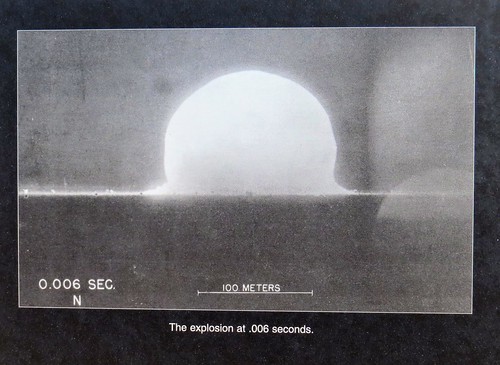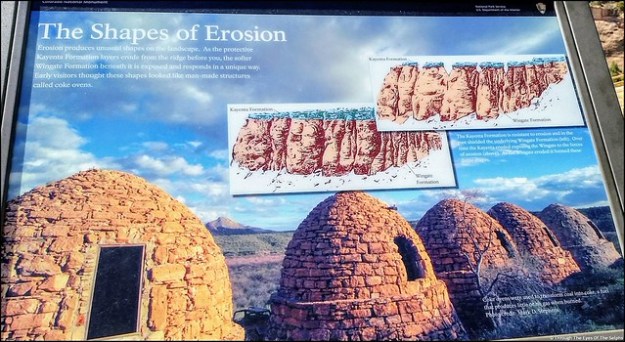Leaving Provo we drove 100 miles north to Brigham City, Utah pop 19,000. Brigham City is much smaller than Provo or Salt Lake City and we enjoyed the small town feeling of the city. Brigham City was named in 1877 for Brigham Young who delivered his last public address there in 1877. 
Bill and I felt comfortable enough there to both get haircuts which we really needed.
We were there for a week and enjoyed touring the area. One day we drove 32 miles to Corinne where we visited the Golden Spike National Historic Site. 
 It was here at Promontory Summit that the Union Pacific (UP) and Central Pacific (CP) rails converged to form the nation’s first transcontinental railroad on May 10, 1869. A golden spike and three other precious metal spikes were placed to commemorate the occasion. Those spikes were then removed and replaced by a regular wooden tie secured to the rail with iron spikes to officially complete the railroad.
It was here at Promontory Summit that the Union Pacific (UP) and Central Pacific (CP) rails converged to form the nation’s first transcontinental railroad on May 10, 1869. A golden spike and three other precious metal spikes were placed to commemorate the occasion. Those spikes were then removed and replaced by a regular wooden tie secured to the rail with iron spikes to officially complete the railroad. 
It had taken six million spikes and six years of hard work to complete the railroad. At times distracted by the Civil War, facing rough terrain and raids by Sioux and Cheyenne, they managed to get the job completed. Eight flatcars of material was needed for each mile of track and every rail, spike and locomotive had to be shipped 15,000 miles around Cape Horn. What a logistical nightmare! With the help of unemployed Irish, German and Italian immigrants, Civil War veterans, ex slaves and Native Americans, a total of 8,000 to 10,000 workers laid two to five miles of track a day on flat land.
The Pacific Railroad Act of 1862 mandated that only American made iron could be used. The demand for iron for building the railroad helped boost the domestic economy. By the 1870’s the iron rail was replaced with sturdy steel rail which had become more widely available after the Civil War.
Congress authorized Central Pacific to build a railroad eastward from Sacramento and at the same time chartered the Union Pacific in New York to go westward. Due to a lack of precise instructions from Congress as to where the rails should meet and financial rewards for building the railroad, the two railroads prepared rail-beds parallel to each other for 250 miles. 

Each railroad received loan subsidies of $16,000 to $48,000 per mile depending on the difficulty of the terrain. Once it was determined the rail-beds were parallel, the railroads were ordered to unite the track. No railroad tracks were ever laid on the parallel beds. Promontory Summit was then chosen as the point to join the tracks. 


Central Pacific (CP) laid 690 miles of track and Union Pacific (UP) 1,086 miles of track across desert, rivers and mountains to unite the east and west coast with 1,776 miles of rail. This brought big changes to the country. People were now able to travel cross country, there were new opportunities for commerce and it opened up settlement in California, Colorado, Nebraska, Nevada, Wyoming and Utah. What had once been a six month journey was now just a week. The prairie schooner was replaced by a railroad coach with all its comforts.
Legislation also called for a telegraph line to be strung along the transcontinental route to bring in a new era of instant communication from coast to coast. When word went out by telegraph in May, 1869 that the railroad and telegraph were completed, Americans celebrated in city after city with church bells ringing, cannons firing, parades, prayers, and singing of the “Star-Spangled Banner”. 
Due to the pandemic we were disappointed that the Visitors Center and theater was closed. The working replicas of the 1869 steam locomotives named “119” (Union Pacific”and “Jupiter” (Central Pacific) were in storage and not in view. Last year on the 150th anniversary they were placed nose to nose.
We were able to drive the two mile East Auto tour which followed old railroad grades and showed the parallel grading completed by the railroad companies. 


We saw the Chinese Arch formed by waves crashing against the ancient shore 300 million years ago which eroded the rock. It is believed it was given the name Chinese Arch in recognition of the presence and contribution made by the Chinese who worked on the railroad. 
On the way home we stopped by the Northrop Grumman Innovation Systems Rocket Garden. The garden displays rockets and missiles built from the 1950’s to the 2000’s. 
One of the rockets is a shuttle booster that took the spaceship with its astronauts to a speed of 17,4000 miles per second. There is also a Minuteman intercontinental ballistic missile, a Maverick air to ground missile designed to be launched from Black Hawk helicopters and an Atlas rocket motor just to name a few of the 39 exhibits. 

Patriot missiles are a long-range, all-altitude, all-weather air defence system to counter tactical ballistic missiles, cruise missiles and advanced aircraft. 
On another day we drove over an hour on the Logan Canyon National Scenic Byway to beautiful Bear Lake. Often called “The Caribbean of the Rockies” because of its intense turquoise blue water, the color of the lake comes from limestone that has calcium in it. 
The calcium, like millions of microscopic mirrors, reflects light from the sky. Bear Lake changes color depending on the weather, wind and time of day. It is believed Bear Lake formed 455,000 years ago. From 1350-1850, thousands of years Native Americans such as the Shoshoni, Ute and Bannock tribes lived in Bear Valley. Bear Lake was discovered in 1812 by trappers returning home from Astori, Oregon. The valley became an important fur trade center. Most of the settlers came from Britain. 

We enjoyed driving around part of Bear Lake on the Oregon Trail Bear Lake Scenic Byway. Bear Lake is so big it is located in both Utah and Idaho. 



After six weeks in beautiful Utah it is time to move on. 
Next up: Twin Falls, Idaho

























































































































































































































































































